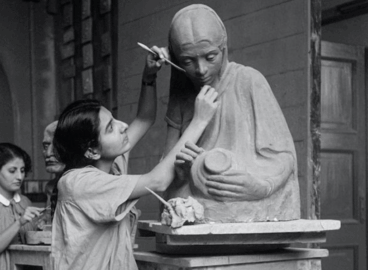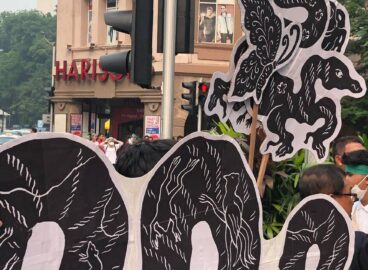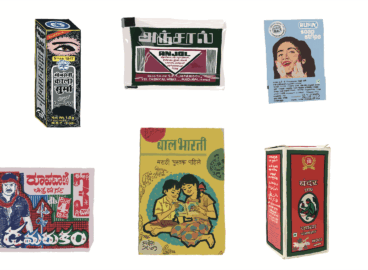Here lies a bibliography to be stepped on. It is composed of forty primarily English-language publications that take the form of exhibition catalogues, anthologies, artists’ books, and scholarly treatises. Together, these volumes give voice to and reflect on a movement with many histories, a movement propelled by artists living in New York, Eastern Europe, and Japan. Many of these artists are still actively pursuing work in the spirit of Fluxus; others are no longer with us, or claim that Fluxus ended 35 years ago, with the passing of George Maciunas, a central organizer and participant.
This is not a definitive bibliography. It does not tell the history of Fluxus, and, read in its entirety, it will not neatly define the movement. The selected texts do, however, provide firsthand records of events and works, and they offer provocative commentaries. The bibliography begins from a perspective that gives direct insight into The Museum of Modern Art’s holdings of Fluxus material, with seven publications edited by Jon Hendricks and published in collaboration with the Gilbert and Lila Silverman Fluxus Collection, Detroit, a collection comprised of nearly 10,000 works that the Museum acquired in 2008. The list fans out from there, with artists’ publications, books on mail art, Tokyo Fluxus, and Fluxus in Eastern Europe, to name a few.
Source contents
Fluxus etc.
By Jon Hendricks, 1981
Publisher: Cranbrook Academy of Art Museum, Bloomfield Hills, Mich.; The Gilbert and Lila Silverman Fluxus Collection, Detroit, Mich.
Language: English
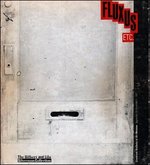
This catalogue was produced on the occasion of a traveling exhibition of works from the Gilbert and Lila Silverman Fluxus Collection. Curated by Jon Hendricks, the exhibition opened at Cranbrook Academy of Art Museum in 1981. The catalogue begins with a section entitled “A Complete History of Fluxus,” comprised of Fluxus manifestos written by George Maciunas and a series of 10-word commissioned statements about Fluxus by artists whose work was produced or was intended to be produced by Maciunas as Fluxus Editions. Fluxus etc. contains extensive, illustrated checklists of Fluxus Editions, Fluxus Periodicals and Documents, and Fluxus Performance Documents from the Silverman Collection, and a working chronology of Fluxus performances realized from 1962 to 1978.
Fluxus etc./Addenda I
By Jon Hendricks, ed., 1983
Publisher: Ink &, New York, N.Y.; The Gilbert and Lila Silverman Fluxus Collection, Detroit, Mich.
Language: English
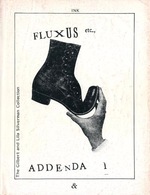
The first of two volumes of addenda to Fluxus etc., this text was published on the occasion of an exhibition at the Neuberger Museum in 1983. It includes a transcript of an interview with George Maciunas by Larry Miller in 1978, shortly before the artist’s death, and full-page reproductions of Fluxus newsletters produced by Maciunas beginning in 1962. (The newsletters were mailed to Fluxus artists and select followers of the movement.) Like the addendum that succeeds it, this volume contains corrections and additions to the 1981 publication’s checklists of Fluxus Editions, Periodicals and Documents, and Performance Documents, and the chronology of Fluxus performances.
Fluxus etc./Addenda II
By Jon Hendricks and Baxter Art Gallery, ed., 1983. exhibition catalogue
Publisher: Baxter Art Gallery, California Institute of Technology, Pasadena; The Gilbert and Lila Silverman Fluxus Collection, Detroit, Mich.
Language: English
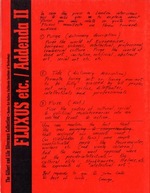
The second volume of addenda to Fluxus etc., produced in conjunction with an exhibition at the Baxter Art Gallery, California Institute of Technology, in the fall of 1983, most notably includes full-page reproductions of “instruction drawings”—sketches, notations, and plans for Fluxus multiples, books, manifestos, and concerts, among other projects.
Fluxus Codex
By Jon Hendricks, ed., 1988
Publisher: Harry N. Abrams, Inc., New York, in association with The Gilbert and Lila Silverman Fluxus Collection, Detroit, Mich.
Language: English

Produced several years after Fluxus etc. and its addenda, Fluxus Codex is the most comprehensive study of objects from the Silverman Collection as compiled by Jon Hendricks, then the curator of the collection. Organized alphabetically by artist, the publication offers a history of Fluxus Editions—cheap, portable publications and multiples—from the collection by linking them to citations from George Maciunas’s correspondence with artists, other Fluxus publications, and an array of archival documents dating from the early 1960s to Maciunas’s death, in 1978. Fluxus Codex has become a primary and indispensable resource for identifying works from this collection, now held at MoMA, and for establishing dates and mapping the various forms and contexts in which the works circulated.
Fluxus: Selections from the Gilbert and Lila Silverman Collection
By Clive Phillpot and Jon Hendricks, 1988. exhibition catalogue
Publisher: The Museum of Modern Art, New York
Language: English
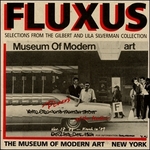
An exhibition catalogue for the first presentation at MoMA of works from the Gilbert and Lila Silverman Fluxus Collection two decades before the collection was officially acquired by the Museum. Organized by Jon Hendricks and Clive Phillpot, then the director of the MoMA Library, the exhibition focused primarily on collective works. As stated by Phillpot in the preface, the exhibition and catalogue “documents George Maciunas’s slow-motion explosion of the concept of the magazine, from Fluxus 1 (1964) to the Flux Cabinet (1975–77).”
Fluxus Scores and Instructions: The Transformative Years, “Make a Salad”
By Jon Hendricks, ed., with Marianne Bech, and Media Farzin , 2008. exhibition catalogue
Publisher: Museet for Samtidskunst (Museum of Contemporary Art), Roskilde, Denmark; Gilbert and Lila Silverman Fluxus Collection, Detroit, Mich.
Language: English
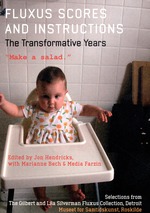
This is the only publication edited by Jon Hendricks that investigates the wealth of Fluxus scores and instructions for performances from the Gilbert and Lila Silverman Fluxus Collection. Hendricks regards these documents as “complete conceptual artworks” that are often overshadowed by the performances they inspired. Fluxus Scores and Instructions was issued in 2008 on the occasion of an exhibition at the Museum of Contemporary Art, Roskilde, Denmark. It includes an exhibition checklist of nearly 400 works, over 100 full-page images, and essays by Marianne Bech, Jon Hendricks, Eric Andersen, Anna Dezeuze, Letty Lou Eisenhauer, Yoko Ono, Susanne Rennert, and La Monte Young.
Maciunas’ Learning Machines: From Art History to a Chronology of Fluxus
By Astrit Schmidt-Burkhardt, ed., 2003. exhibition catalogue
Publisher: Gilbert and Lila Silverman Fluxus Collection, Detroit; Vice Versa Verlag, Berlin
Language: English
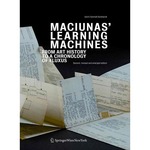
This book, produced on the occasion of an exhibition of the same name at Kunstbibliothek, Staaliche Museen zu Berlin in 2003, includes nearly three dozen images of diagrams made by George Maciunas, a central organizer and participant of Fluxus, during the period 1953–1973. The reproductions are accompanied by a text by Astrit Schmidt-Burkhardt that provides insight into Maciunas’s graphic sensibility and preoccupation with developing schematic drawings as a means of historicizing and contextualizing the collective’s art practices. The study elucidates how, through charts, maps, and graphs, Fluxus (the name derives from the Latin fluere: to flow) could be made intelligible to a diverse art public.
What’s Fluxus? What’s Not! Why. (O que é Fluxus? O que não é! O porquê)
By Jon Hendricks, ed., 2002. exhibition catalogue
Publisher: Centro Cultural Banco do Brasil, Rio de Janeiro; The Gilbert and Lila Silverman Fluxus Collection, Detroit, Mich.
Language: English, Portuguese
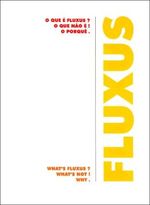
This book ruminates on the definition of Fluxus through scholarly treatises by René Block and Tobias Berger, Ina Blom, Thomas Kellein, Joan Rothfuss, and Harry Ruhé; interviews with George Maciunas; and reproductions of seminal texts by Fluxus artists, including, in order of appearance, La Monte Young, George Brecht, Yoko Ono, George Maciunas, Ben Vautier, Nam June Paik, Robert Filliou, Robert Watts, Wolf Vostell, Kate Millett, Tomas Schmit, Dick Higgins, and Per Kirkeby. Produced on the occasion of an exhibition of the same name at the Centro Cultural Banco do Brasil in 2002.
An Anthology [Second Edition]
By La Monte Young, ed., and George Maciunas, designer, 1970
Publisher: Heiner Friedrich, New York
Language: English
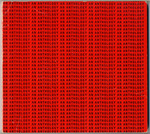
This is the corrected, second edition of a seminal collection of performance scores, experimental poetry, music, and essays that La Monte Young began editing in 1961 and first published with Jackson Mac Low in 1963, with design and assembly assistance from George Maciunas. A proto-Fluxus publication, An Anthology features works by many Fluxus artists and is an early model for collective publishing projects spearheaded by Maciunas, such as Fluxus 1. With contributions by George Brecht, Claus Bremer, Earle Brown, Joseph Byrd, John Cage, David Degener, Walter De Maria, Henry Flynt, Yoko Ono, Dick Higgins, Toshi Ichiyanagi, Terry Jennings, Dennis Johnson, Ding Dong, Ray Johnson, Jackson Mac Low, Richard Maxfield, Malka Safro, Simone Forti, Nam June Paik, Terry Riley, Dieter Roth, James Waring, Emmett Williams, Christian Wolff, and La Monte Young.
Art, Anti-Art, Non-Art: Experimentations in the Public Sphere in Postwar Japan, 1950–1970
By Charles Merewether, Rika Iezumi Hiro, and Reiko Tomii, 2007. exhibition catalogue
Publisher: Getty Research Institute, Los Angeles, Calif.
Language: English
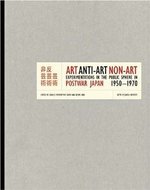
Created for the exhibition Art, Anti-Art, Non-Art: Experimentations in the Public Sphere in Postwar Japan, 1950–1970, held at the Getty Research Institute March 6–June 3, 2007, this catalogue is an excellent sourcebook on artistic production during a period of economic growth that revitalized Japan’s cultural landscape. The focus is on a number of prominent artists’ groups, including Tokyo Fluxus, Experimental Workshop/Jikken Kobo, Gutai, Group Ongaku, and Neo Dada, whose distinctive practices and shared positions in the political and social debates of the period are investigated.
Correspondence Art: Source Book for the New Work of International Postal Art Activity
By Michael Crane and Mary Stofflet, 1984
Publisher: Contemporary Arts Press, San Francisco, Calif.
Language: English
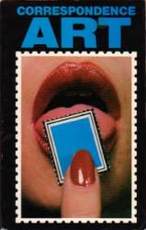
An in-depth, illustrated study of mail art with essays by artists and historians, including Fluxus artists Ken Friedman, Dick Higgins, and Ray Johnson.
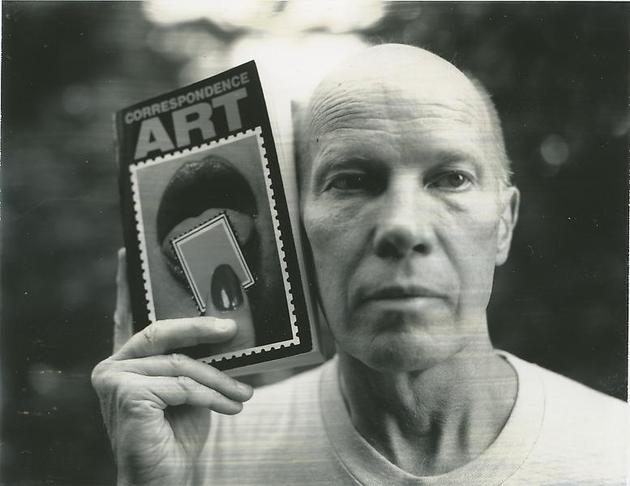
Critical Mass: Happenings, Fluxus, Performance, Intermedia, and Rutgers University, 1957–1972
By Geoffrey Hendricks, ed., 2003. exhibition catalogue
Publisher: Rutgers University Press, New Brunswick, N.J.
Language: English
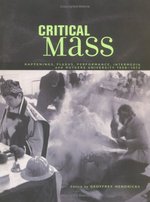
Artist Geoffrey Hendricks taught at Rutgers University for nearly 50 years. In Critical Mass he chronicles the avant-garde activity—Happenings, Fluxus, performance, and intermedia—that defined the academic landscape between 1958 and 1972. Critical Mass extends a dialogue initiated in two earlier texts, both of which are included in this bibliography: Experiments in the Everyday: Allan Kaprow and Robert Watts, Events, Objects, Documents and Off Limits: Rutgers University and the Avant-Garde,1957–1963, chronicling the activity beyond 1963, when Allan Kaprow and Roy Lichtenstein left the campus.
The Dream of Fluxus: George Maciunas, An Artist’s Biography
By Thomas Kellein, 2007
Publisher: Edition Hansjörg Mayer, Germany
Language: English
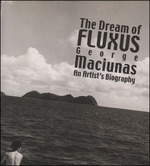
“The Dream of Fluxus is the story of George Maciunas’s life, a real-life legend on a grand scale. Thomas Kellein, Director of Kunsthalle Bielefeld, from 1982 to 1988, Curator of the extensive Hanns Sohm Intermedia Archive in the Staatsgalerie Stuttgart, and writer on Fluxus, explores a very particular artist’s biography. While the art scene has developed into a global market at an astounding pace in the years since Maciunas’s death, our concept of works of art with no financial value as such—the aim that Fluxus set itself in 1962—has paled worryingly into insignificance. In view of our present situation, the story of the Chairman of Fluxus is not just a source of laughter and tears, it also reminds us of the oldest social ideals of art—Harmony, Order, Justice—although Goodness enjoyed only a limited triumph under the banner of Fluxus.” —from the back cover.
Experiments in the Everyday: Allan Kaprow and Robert Watts, Events, Objects, Documents
By B.H.D. Buchloh and Judith F. Rodenbeck, 1999. exhibition catalogue
Publisher: Columbia University, Miriam and Ira D. Wallach Art Gallery, New York
Language: English
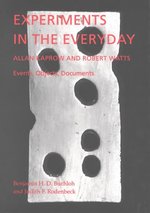
This catalogue, produced in conjunction with the exhibition Experiments in the Everyday: Allan Kaprow and Robert Watts—Events, Objects, Documents, held in the autumn of 1999 at Columbia University’s Miriam and Ira D. Wallach Art Gallery, places the work of Allan Kaprow, the internationally acclaimed inventor of Happenings, in dialogue with that of Robert Watts, a lesser-known artist affiliated with Fluxus and Pop Art, who, like Kaprow, taught at Rutgers University. Experiments in the Everyday delves into the work of both artists, whose performances reflected the changing aesthetic landscape of the postwar period.
The Four Suits
By Dick Higgins, ed., Benjamin Patterson, Philip Corner, Alison Knowles, and Tomas Schmit, 1965
Publisher: Something Else Press, Inc., New York, Paris, Cologne
Language: English
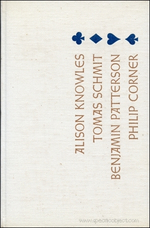
The Four Suits is a selection of work by Benjamin Patterson, Philip Corner, Alison Knowles, and Tomas Schmit—Fluxus artists who were brought together by Higgins in this publication to reveal their experiments in mediums in which they were not trained, and which they often devised on their own. The book was published by Something Else Press, Inc., founded by Higgins in 1963, and includes a forward by the publisher with remarks on the critic’s role in evaluating intermedia art.
Fluxus at 50
By Alexander Klar, ed., Stefan Fricke, and Sarah Maske, 2012. exhibition catalogue
Publisher: Kerber Verlag, Bielefeld, Germany
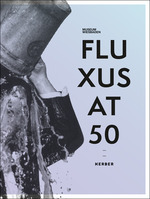
From the publisher’s note:
Fifty years ago, in 1962, Lithuanian-born George Maciunas (1931–78) organized the first ever Fluxus festival, The International Fluxus Festival of the Newest Music, at Museum Wiesbaden in Germany. The festival presented musical and performance work by Joseph Beuys, George Brecht, John Cage, Alison Knowles, Nam June Paik, and La Monte Young, among others, and was the first of many such festivals and concerts to be organized under the Fluxus banner. Published to coincide with the 2012 jubilee celebrations, Fluxus at 50 aims to reconstruct and reappraise this mercurial, playful movement of cultural, political, and social “renewed Dadaism.” This…catalogue [presents]…methods, motifs, and stories using images, musical scores, and objects from the Fluxus period. Eric Andersen, George Brecht, Philip Corner, Robert Filliou, Al Hansen, Geoff Hendricks, Dick Higgins, Milan Kníák, Alison Knowles, Yoko Ono, Nam June Paik, Ben Patterson, Dieter Roth, Takako Saito, Ben Vautier, Wolf Vostell, and Emmett Williams are among the artists represented… in…reproductions, archival photographs and documents, biographical material, and essays.
Fluxus–Art into Life
By Urawa Art Museum, ed., Nobuko Akita, Yoko Hayami, Midori Yoshimoto, trans., 2004. exhibition catalogue
Publisher: Urawa Bijutsukan, Saitama-ken Saitama-shi
Language: Japanese, English
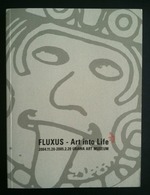
This catalogue was produced on the occasion of the exhibition Fluxus–Art into Life at the Urawa Art Museum in 2004. The exhibition focused on Fluxus activities from the late 1950s to 1978, the year of Maciunas’s death, and presented approximately 500 objects culled exclusively from collections in Japan. The catalogue includes images of works from the exhibition and a reprint of “Fluxus Universe,” a conversation between artists Kuniharu Akiyama, Ay-O, and Mieko Shiomi that was first published in Art Vivant in 1983. Fluxus–Art into Life also includes a map of relationships among Fluxus artists and a table, organized chronologically, of notable Fluxus works and performances.
Fluxus East: Fluxus-Netzwerke in Mittelosteuropa (Fluxus East: Fluxus Networks in Central Eastern Europe)
By Petra Stegmann, ed., 2007. exhibition catalogue
Publisher: Kuenstlerhaus Bethanien, Berlin
Language: German, English
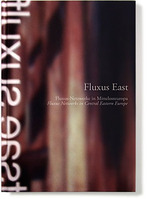
Published in conjunction with a series of exhibitions held between 2007 and 2010 in Berlin, Vilnius, Cracow, Budapest, Tallinn, Copenhagen, and Høvikodden (Norway), this book marks the beginning of an ongoing project initiated and led by Petra Stegmann to document and interpret Fluxus networks in Central and Eastern Europe. The project has its own website, and the book’s 11 essays discuss the artistic practices of figures such as Miklós Erdely, György Galántai, Milan Knížák, Július Koller, Jarosław Kozłowski,Vytautas Landsbergis,Tamás St. Auby, Endre Tót, Jiří Valoch, and Branko Vučićević.
This book is also included in the C-MAP Research Trip Bibliography (Romania, Lithuania, Serbia).
Fluxus Experience
By Hannah Higgins, 2002
Publisher: University of California Press, Berkeley, Calif.
Language: English

Art historian Hannah Higgins, the daughter of Fluxus artists Alison Knowles and Dick Higgins, mines the experiential nature of Fluxus works—what the author refers to as “the transactional, interpenetrative framework and its capacity to create a sense of continuity with the world.” Rather than interpret the meaning of a series of individual works, Higgins offers an analysis of the informational structure that underlies Fluxus experience and the discursive, pedagogical methodologies employed by a number of the movement’s artists.
The Fluxus Reader
By Ken Friedman, ed., 1998
Publisher: Academy Editions, New York, N.Y.
Language: English
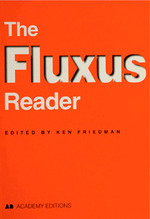
A comprehensive investigation of Fluxus comprised primarily of historical and critical essays by scholars in the field such as Owen Smith, Hannah Higgins, Ina Blom, David Doris, Stephen Foster, Estera Millman, and Nicholas Zurbrugg. The text also includes transcripts of interviews with George Maciunas and his wife, Billie, and two theoretical texts on the movement by Dick Higgins and Ken Friedman, respectively. A free, online edition of The Fluxus Reader was launched by Swinburne University of Technology, Melbourne, Australia, to celebrate the 50th anniversary of Fluxus.
Fluxus: The History of an Attitude
By Owen F. Smith, 1998
Publisher: San Diego State University Press, San Diego, Calif.
Language: English

A history of Fluxus that traces pre-Fluxus influences (1959–61), early Fluxus (1962–64), the middle years (1965–69), late Fluxus (1971–78), and the “Fluxus attitude” that pervaded all, this book attempts to make legible the diverse histories of the geographically and temporally dispersed movement.
Games at the Cedilla; or the Cedilla Takes Off
By George Brecht and Robert Filliou, 1967
Publisher: Something Else Press, New York, N.Y.
Language: English
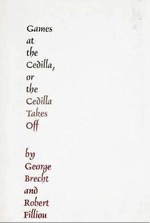
A collection of writings, poems, plays, games, and correspondence culled from the notebooks of George Brecht and Robert Filliou, artists who, at the time of the book’s publication, lived in France, where they ran a storefront gallery and research space, La Cédille Qui Sourit (the Smiling Cedilla). Located in Villefranche-sur-Mer, near Nice, La Cédille Qui Sourit was a convivial collaborative space that the artists claimed handled “everything which does or does not have a cedilla in its name.” Operating on the principles of a gift economy, it presented the works and ideas of an international network of friends and collaborators and is a prime example of the collective, anti-commercial Fluxus activities of the 1960s.
Happening & Fluxus: Materialien
By H. Sohm, ed., 1970. exhibition catalogue
Publisher: Kölnischer Kunstverein, Cologne
Language: German
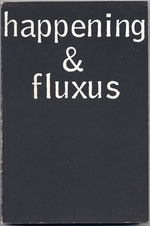
Happening & Fluxus was published in conjunction with the exhibition of the same name curated by Hans Sohm and Harald Szeemann and held at the Kölnischer Kunstverein, Cologne, in 1970. The catalogue provides a thorough chronology of Happenings and Fluxus performances and events that occurred from 1959 to the end of 1970, and is extensively illustrated with black-and-white reproductions of posters, programs, advertisements, photographs, and ephemera. It also includes a bibliography, organized by artist, that provides a reference list of monographs and reviews.
Illegal Living: 80 Wooster Street and the Evolution of SoHo
By Roslyn Bernstein and Shael Shapiro, 2010
Publisher: The Jonas Mekas Foundation, Vilnius
Language: English
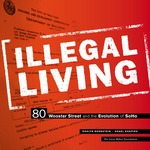
Illegal Living: 80 Wooster Street and the Evolution of SoHo tells “the story of the building at 80 Wooster Street in New York and the people who lived and worked there [from the 1960s to the ’80s]. The first of 16 artists’ coops started by George Maciunas, founder of the Fluxus art movement, Fluxhouse Coop II spurred the development of SoHo and the spread of worldwide loft conversions. […] The authors reveal the myriad ways that the legal formalities and unavoidable business decisions of a live-work cooperative were shaped on a daily basis.” —from the back cover.
In the Spirit of Fluxus
By Elizabeth Armstrong, Janet Jenkins, and Joan Rothfuss, 1993. exhibition catalogue
Publisher: Walker Art Center, Minneapolis, Minn.
Language: English
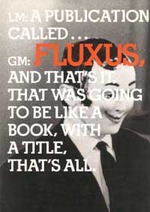
From the publisher’s note:
This major document provides the first comprehensive overview of Fluxus. Illustrated with more than 300 reproductions (many previously unpublished), as well as an important selection of artists’ writings and documents, the book features seven groundbreaking essays by renowned scholars that explore the Fluxus movement in its various incarnations across a variety of media. Published by the Walker Art Center in conjunction with its major traveling exhibition, the book is an essential research source and includes a detailed bibliography and index.
Into Performance: Japanese Women Artists in New York
By Midori Yoshimoto, 2005
Publisher: Rutgers University Press, Brunswick, N.J.
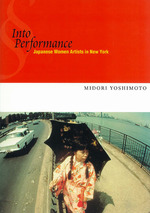
A comparative examination of Japanese women artists Yayoi Kusama, Yoko Ono, Takako Saito, Mieko Shiomi, and Shigeko Kubota, all of whom, with the exception of Kusama, were involved in Fluxus and split their time in the 1960s between Tokyo and New York. The study begins by examining the five artists’ shared experiences as women in postwar Japan, their encounters with Happenings and Events in Tokyo, and their departures for New York. Yoshimoto devotes the remaining five chapters to an in-depth examination of each artist’s contributions to performance and intermedia art in the 1960s.
Japanese Art after 1945: Scream against the Sky
By Alexandra Munroe, 1994. exhibition catalogue
Publisher: Abrams, New York, N.Y.
Language: English
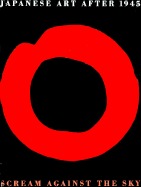
An important illustrated survey of postwar Japanese art that critically examines the role and definition of Japanese identity in artistic production and the influence of Western aesthetics, as well as Japanese cultural heritage, on artists living in the country during this period of economic growth, with particular attention paid to Fluxus and Gutai.
Jefferson’s Birthday; Postface
By Dick Higgins, 1964
Publisher: Something Else Press, New York, N.Y.
Language: English
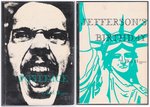
Jefferson’s Birthday; Postface contains two works by artist Dick Higgins, the seminal Fluxus artist who coined the term intermedia, bound back-to-back. Jefferson’s Birthday is a collection of Higgins’s writings, scores, and inventions produced between April 13, 1962, and April 13,1963. It includes everything he created that year, on the premise that the act of making is simply meaningful, and bad work is as worthy as the good. Postface is an essay by Higgins that investigates how the working conditions of artists of his generation shape the art they produce.
As written by Higgins on the dustcover of Postface:
“On a good day, somebody is shot, somebody is cold, somebody can’t find work, somebody doesn’t care, somebody has contempt for somebody’s hunger. The central problems of the moment are based on this fact. The question is how should or does art mirror this fact. I wrote Postface to try to help end a line of degeneration that leads directly from Wagner and Strindberg to Koch and Leroy Jones and Stockhausen. It is necessary to have an art which creates a tough, uncompromising, revolutionary mentality capable of expressing, handling, and extending scientifically the great tendencies of our times.”
Journal of the Identical Lunch
By Alison Knowles, 1971
Publisher: Nova Broadcast Press, San Francisco, Calif.
Language: English
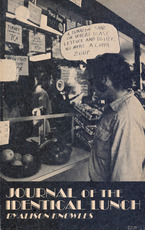
This journal documents Knowles’s signature Fluxus performance piece, The Identical Lunch: “a tunafish sandwich on wheat toast with lettuce and butter, no mayo and a large glass of buttermilk or a cup of soup […] eaten many days of each week at the same place and at about the same time.” The journal includes reflections by participants Philip Corner, Dick Higgins, John Giorno, and Susan Hartung, as well as photographs, meal receipts, letters, and a diary account by Knowles of her “identical” dining experiences at the Riss Diner in 1968.
Klavierzerstörungen in Kunst und Popkultur (Piano Destruction in Art and Pop Culture)
By Gunnar Schmidt, 2012
Publisher: Reimar, Berlin
Language: German
Links: http://piano-activities.de/englindex.html

This study of the destruction of pianos in art and pop culture in the 20th and 21st centuries includes an in-depth analysis of the legendary performance of Philip Corner’s Piano Activities at the first of many Fluxus festivals, the International Festival of the Newest Music in Wiesbaden in 1962. Schmidt’s essay provides a detailed history of the early Fluxus event, performed by George Maciunas, Emmett Williams, Wolf Vostell, Nam June Paik, Dick Higgins, Benjamin Patterson, and Alison Knowles, that, to the surprise of the composer, led to the destruction of a grand piano. Published after an important discovery in 2011 of two tape recordings of the performance in Wiesbaden, Schmidt’s essay critically examines this new material while tracing the connections between Fluxus, destructive anti-art activity, and music. In addition to the book, digital versions of the recordings and an English translation of Schmidt’s essay are available online.
Teaching and Learning as Performing Arts (Lehren und Lerne als Auffuehrungskuenste)
By Robert Filliou, 1970
Publisher: Gebr. Koeing, New York and Cologne
Language: German, English
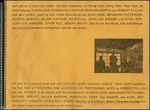
Teaching and Learning as Performing Arts is a study by the artist Robert Filliou of experimental pedagogy based on the principles of Fluxus and kindred, participatory art movements that prospered in Filliou’s era. In his introduction, Filliou writes: “The purpose of this study is to show how some of the problems inherent to teaching and learning can be solved–or at least eased–through an application of the participation techniques developed by artists in such fields as: happenings, events, action poetry, environments, visual poetry, films, street performances, non-instrumental music, games, correspondences, etc.” The publication’s design enacts the principles it discusses: the text is punctuated with blank spaces left for the reader to fill—an invitation to collaborate and co-author the book.
The Lunatics Are on the Loose
By Petra Stegmann, ed., 2013. exhibition catalogue
Publisher: DOWN WITH ART!, Postdam, Germany
Language: English

From the publisher’s note:
Publication in English on the occasion of the exhibition “The lunatics are on the loose …” EUROPEAN FLUXUS FESTIVALS 1962–1977
Extensive documentation of 32 selected European Fluxus events in Aachen, Aberystwyth, Amsterdam, Berlin, Budapest, Copenhagen, Düsseldorf, London, Madrid, Nizza, Oslo, Paris, Prague, Poznan, Rotterdam, Scheveningen, Stockholm, Vilnius, Wiesbaden, Wuppertal
Contributions by Jennifer Burkard, Myriam Kroll, Peter van der Meijden, Susanne Rennert, Henar Rivière Ríos, Heike Roms, Vanja Sisek, Petra Stegmann, Caroline Ugelstad
Artistic contributions by Eric Andersen, Philip Corner, Alison Knowles, Jarosław Kozłowski, Larry Miller, Ann Noël, Ben Patterson, Tamas St.Turba
Mr. Fluxus: A Collective Portrait of George Maciunas, 1931–1978
By Emmett Williams and Ann Noël, eds., and Ay-O, 1997
Publisher: Thames and Hudson, London
Language: English
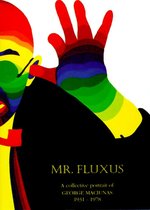
A collective portrait of George Maciunas, the central, organizing figure and participant in Fluxus, based on personal anecdotes and reminiscences gathered by the artists Emmett Williams and Ay-O from more than 80 of Maciunas’s friends and Fluxus colleagues.
Networked Art
By Craig J. Saper, 2001
Publisher: University of Minnesota Press, Minneapolis, Minn.
Language: English
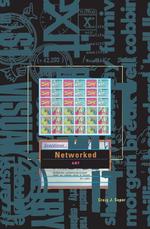
Networked Art examines how Fluxus artists, along with concrete poets and Lettrists, working offline in analogue media, used “social situations or social networks as a canvas”—a form of “sociopoetic research” that crucially influences contemporary networked art.
From the publisher’s note:
The experimental art and poetry of the last half of the twentieth century offers a glimpse of the emerging networked culture that electronic devices will make omnipresent. Craig J. Saper demarcates this new genre of networked art, which uses the trappings of bureaucratic systems—money, logos, corporate names, stamps—to create intimate situations among the participants.
In Saper’s analysis, the pleasures that these aesthetic situations afford include shared special knowledge or new language among small groups of participants. Functioning as artworks in themselves, these temporary institutional structures—networks, publications, and collective works—give rise to a gift-exchange community as an alternative economy and social system. Saper explains how this genre developed from post-World War II conceptual art, including periodicals as artworks in themselves; lettrist, concrete, and process poetry; Bauhaus versus COBRA; Fluxus publications, kits, and machines; mail art and on-sendings. The encyclopedic scope of the book includes discussions of artists from J. Beuys to J. S. G. Boggs, and Bauhaus’s Max Bill to Anna Freud Banana.
Off Limits: Rutgers University and the Avant-Garde, 1957–1963
By Joan Marter, ed., 1999. exhibition catalogue
Publisher: The Newark Museum and Rutgers University Press, N.J.
Language: English
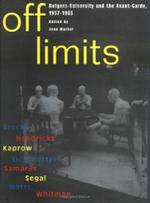
Off Limits is the first publication to examine a group of artists who studied or worked as faculty at Rutgers University’s New Brunswick campus between 1957 and 1963, rejecting Abstract Expressionism to pursue work that responded directly to their everyday, urban experiences. The book was issued on the occasion of an exhibition of the same name at the Newark Museum in 1999 and traces the emergence of Happenings and Pop Art on the campus through artists like Allan Kaprow and Roy Lichtenstein, and proto-Fluxus events and Conceptual Art by George Brecht, Geoffrey Hendricks, and Robert Watts. Off Limits includes five essays, interviews with artists, and the first publication of “Project in Multiple Dimensions,” a grant application essay written by Kaprow, Watts, and Brecht in which the artists declare their commitment to emerging technology.
Radicals and Realists in the Japanese Nonverbal Arts: The Avant-Garde Rejection of Modernism
By Thomas R. H. Havens, 2006
Publisher: University of Hawaii Press, Honolulu
Language: English
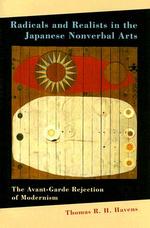
Havens’s book is valuable as an introduction to artists across multiple disciplines and for its emphasis on the oral testimony of Japanese avant-garde artists—including many Fluxus artists—who were active in the 1950s and 1960s. Focusing on what the author calls “the most progressive” individuals involved in “the nonverbal arts” in postwar Japan, Havens offers a view of a changing terrain of artistic politics. The project is transnational in focus, comparative, and privileges the voices of the artists interviewed. The emphasis is very much on what is said about art rather than analysis.
This book is also included in the Experimental Music in Japan (A Short List) bibliography.
Hsin hsin ming
By Seng Ts’an, calligraphy by Takako Saito, translated by George Brecht (English), Albrecht Fabri (Dutch), and Robert Filliou (French), 1980
Publisher: Lebeer Hossmann, Brussels and Hamburg
Language: English, Dutch, French, and Chinese

Hsin hsin ming (Faith in Mind) is a polyglot translation of Seng Ts’an’s seventh-century writings on Chinese Buddhism by George Brecht, Albrecht Fabri, and Robert Filliou, with calligraphy by Takako Saito in k’ai shu style. The publication, produced as a limited edition, reflects the shared interest of many Fluxus artists in Zen Buddhism.
Spatial Poem
By Shiomi Mieko, 1976
Publisher: Mieko Shiomi, Osaka
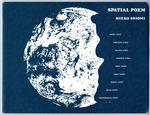
This artist’s book documents nine “global events,” called Spatial Poems, performed by Shiomi Mieko and her international network of friends and colleagues between 1965 and 1975. Shiomi began each event by sending through the post a simple, poetic instruction such as “open something which is closed” or “observe the natural phenomenon that something is going to disappear.” Spatial Poem records and maps the interpretive responses that Shiomi received from participants in each event. The project is an excellent introduction to Shiomi’s artistic practice and to the contributions made by Fluxus artists to the field of mail art.
For selected pages from the 1976 booklet Spatial Poem and related material from the collection of The Museum of Modern Art, see the Spatial Poems at MoMA feature.
What Is Fluxus? The People Who Connected Art and the Everyday (Furukusasu towa nanika: Nichijo to ato o musubitsuketa hitobito)
By Shiomi Mieko, 2005
Publisher: Firumuātosha, Tokyo
Language: Japanese
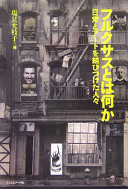
Shiomi Mieko’s history of Fluxus from the 1960s to the present recounts the artist’s personal encounters with the collective in the United States and Japan and the influence of George Maciunas on her artistic practice. The text includes chapters on Fluxus today, the artist’s pre-Fluxus experiences, her involvement in Fluxus, challenges in Japan, 1990s Fluxus Festivals in the West, Japanese projects since the 1990s, and a closing chapter called “Beyond Genre,” on translating an idea from one medium to the next.
Women’s Work
By Alison Knowles and Annea Lockwood, eds., 1975
Publisher: Alison Knowles and Anna Lockwood, N.Y.
Language: English

This collection, edited by Alison Knowles and composer Annea Lockwood, brings together textual scores exclusively by women. It includes work by Shiomi Mieko, Julie Winter, Sari Dienes, Mary Lucier, Bici Forbes, Simone Forti, Elaine Summers, Wendy Greenberg, Annea Lockwood, Jacki Apple, Pauline Oliveros, Alison Knowles, Marilyn Wood, Heidi Von Gunden, Beth Anderson, and Carole Weber.
